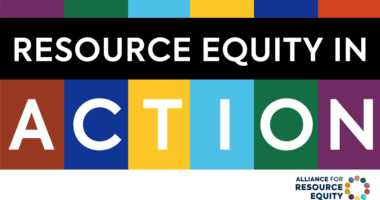How the Gifted Program Changed My Life
Every student has a teacher they remember for making a difference in their academic journey — mine was my first-grade teacher, Ms. Vinning. It was my first year at a new school as one of only a handful of Black students in my class in south Louisiana. While I was focused on getting acclimated to a new learning environment and making new friends, Ms. Vinning noticed my immense curiosity to learn and high levels of achievement for a six-year-old. She immediately recommended me for the gifted program, and after passing the eligibility test, I was moved to the gifted program at the start of the second grade. That day changed my life.
For the remainder of my P-12 education, I was surrounded by the same 20 kids. We were encouraged to follow our inquisitive minds with new assignments and projects, field trips to various museums, attending and playing piano for symposiums at top colleges, and meeting prominent people across the country. We had special enrichment classes once a week about art history, methods of advertising, team building, money management, and computer coding, just to name a few. By the time graduation day came 11 years later, I had more experiences and accolades than I could write about in my college applications, a competitive GPA and ACT score to supplement, and a plethora of teachers to call on for guidance about my postsecondary college goals.
What I did not have, after 11 years, was a community of gifted peers who looked like me — there were only eight Black students in my cohort, including myself. The lack of access to gifted and talented programs is not limited to my experience — this is the experience of all students across the U.S. The inequitable distribution of Black students in gifted and talented programs creates one of the first barriers Black students face in trying to gain access to opportunities within the P-12 education system.
Louisiana public schools are home to nearly 285,000 Black students, comprising almost 42% of all students within the public school system. As of the 2023-24 academic year, Louisiana public schools educated roughly 285,000 Black students — 2,000 more Black students than white students. Yet, only 22% of gifted students in the state are Black, whereas 63% are white. Within my home parish of Lafayette, there are almost equal numbers of Black and white students enrolled in public schools, 12,393 and 12,635 respectively. The number of Black students in the gifted and talented program, however, is 14% compared to 70% of white students. EdTrust has already reported that Black and Latino students are shut out of advanced placement courses, but the truth is this path starts in elementary school.
Gifted program enrollment in elementary school often leads to students taking advanced placement courses in middle and high school, which in turn creates more career and college opportunities upon graduation. However, because of the reliance on an educator recommendation to identify students with “gifted” potential, too often Black students are not even given the chance to test into the gifted program. Teachers often hold preconceived notions of what a “gifted” student is due to their educator preparation program, their own personal experience with gifted students, and their racial biases that do not align with Black giftedness. Because of existing inequities in the Louisiana school system, not every school is fortunate to have a gifted program and I did not live in a school zone with gifted classes. If it weren’t for Ms. Vinning’s attentiveness and my parents’ understanding of the doors that are opened simply because I was a gifted student, I am not sure where I would be today.
What can educators and districts do to make gifted programs more equitable?
As our nation’s schools become more diverse and multicultural, the number of Black students in gifted and talented programs should reflect the percentage of Black students enrolled in public schools. In Louisiana, this would mean doubling the current number of Black students in the gifted and talented program. To do so, school districts would need to optimize their enrollment through universal screening and automatic enrollment of any student who shows accelerated achievement through course grades, end-of-year exams, and student ambition. To help educators more equitably recommend students for gifted programs, professional development sessions should be required so educators can more readily recognize giftedness in Black students, students with disabilities, and other underrepresented students. To further assist with enrollment, school districts must inform parents of the courses offered, and more importantly the process of enrolling in the courses, within the school as part of orientation and introductory materials provided at the beginning of each academic year.
Parents and educators cannot increase access to gifted programs alone, policymakers also have an important role to play. At the federal level, the Department of Education and Congress can help school districts by implementing universal screening and expanding enrollment in advanced courses, covering course fees for students from low-income backgrounds, and providing advanced course training for educators. Additionally, Congress can advance legislation such as The Advanced Coursework Equity Act, which would provide states and districts with up to $60 million in grant funding to accomplish these goals and many more to decrease inequities in the American education system.
Being a gifted student changed my life. Years of enrichment classes and Socratic seminars made me the fierce education equity advocate I am today, and every Black student should have access to the opportunities that were provided to me. Far too few students receive the resources, attention, and opportunities they deserve and need to thrive in school, which is why advocates, policymakers, and education leaders must push for equitable access to gifted programs for all students. When you raise your expectations for students, their self-esteem and efforts are boosted to meet them. When you show them a world of possibilities, they accomplish goals beyond the horizon.
Show Black students the world.





